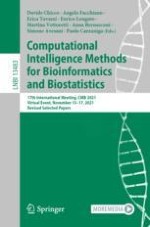2022 | OriginalPaper | Buchkapitel
Recent Dimensionality Reduction Techniques for High-Dimensional COVID-19 Data
verfasst von : Ioannis L. Dallas, Aristidis G. Vrahatis, Sotiris K. Tasoulis, Vassilis P. Plagianakos
Erschienen in: Computational Intelligence Methods for Bioinformatics and Biostatistics
Aktivieren Sie unsere intelligente Suche, um passende Fachinhalte oder Patente zu finden.
Wählen Sie Textabschnitte aus um mit Künstlicher Intelligenz passenden Patente zu finden. powered by
Markieren Sie Textabschnitte, um KI-gestützt weitere passende Inhalte zu finden. powered by
